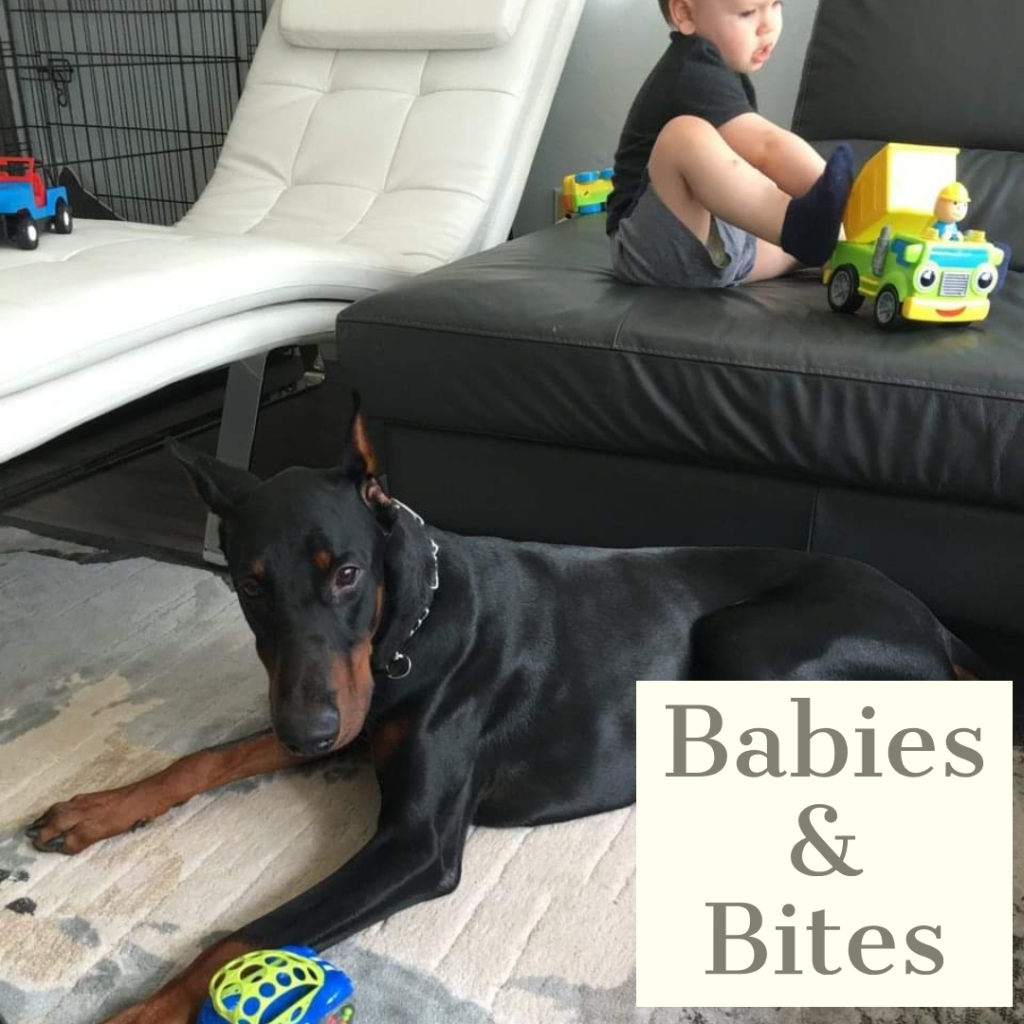“My dog bit my child in the face out of nowhere.”
“My dog has never had an issue with us before.”
“They were playing together, just fine.”
“We went to pick up the baby when it happened.”
“My dogs should be protecting my children.”

This article is meant to be helpful with the intention to save lives. I do, however, want you to be concerned once you read it. If it causes one person to analyze their relationship with their dog, that’s one more person with the power to save themselves or a child. Share it with someone who has children and a dog in their life.
The Aggressive Dog recipe
Dog aggression followed by bites to humans and dogs is frequently reported as “all of sudden” or “out of nowhere.” Sure, maybe the incident was unexpected, but, a lot of times there are signs or communication your dogs are trying to use to tell you it’s going to bite or is uncomfortable.
It all starts with the moment the soon to be biting dog arrives home. If you have the right recipe with the right dog, you may create a monster. You will unintentionally create an aggressive dog. It’s easy to create a biting dog, so don’t feel guilty. You don’t know what you don’t know.
So you bring home the “perfect dog.” The dog is allowed roaming of the house at will, free affection, free to use all furniture, sleeping in the same room as the owners, and has never received a consequence for unwanted behavior. This dog is stubborn, mouthy, has an attitude but, is what you label as a “good dog” so you allow it to make choices. Those are the main ingredients of what I refer to as the “right recipe.”
What if your baby, toddler, or teenager had the same privileges? If your baby were allowed to roam and do what it wants chances are it would get seriously hurt. You would possibly say the baby is unable to care for itself and needs a playpen or crib. And you’d be correct. The issue is we don’t apply logical concepts to our dogs. As a society, we do employ some things. The emotional gratifying stuff. The easy stuff.
Your love and your dog’s aggressive behavior
The easy stuff primarily is love and affection. How in the heck do love and affection create an aggressive dog? It doesn’t create dog aggression all by itself. The right recipe does. The missing ingredient is us having a balance as humans to teach balance to our dogs. As a society, we don’t share valuable consequences or information that is clear to dogs. We place the dog in situations that it’s uncomfortable and expect it to make good choices. For example,
- We leave a nervous, insecure, or out of control dog to patrol the house, potentially teaching it to guard. The dog learns its job is to guard and so it does. It starts to growl at your visitors. It even starts being possessive of your child from other family members and growling at them as well.
- Allowing strangers, our family, and other dogs to invade your dog’s space after it has signaled it doesn’t like it.
- Unintentionally ignoring signs of discomfort like a dog looking or moving away.
Aggressive or protective dogs
A protection dog and a possessive dog are two different things. A possessive family pet dog typically is communicating there’s an issue. The family dog feels threatened, so it becomes defensive, and because that behavior has been allowed. It doesn’t excuse the aggressive behavior. For example, the family dog is possessive over its bone or food bowl. A protection dog has specific job professionally. It does not possess or aggress due to lack of rules, communication, or when it feels like acting out aggressively.
How to prevent dog bites
To help prevent bites to children and humans, I suggest implementing rules to your dogs and children alike. If your child is too young to follow the rules or understand dog body language, I recommend that when your child and your dog are interacting that you keep their interactions supervised. In my personal opinion, dogs and child under a certain age should be kept separate. How you separate them depends on your dog’s behavior.
Have your dog on place command during baby play time. Tether the dog to a leash so it is unable to reach the baby. Kennel the dog. As a result, the dog can’t steal toys or practice inappropriate behaviors while the baby plays. Monitor the child’s behavior and intention towards the dog. Safety should be your primary goal.
How to Introduce the baby to a dog
A special meeting isn’t necessary if your dog has not met your unborn baby. There is no need for the dog to sniff the baby or child. The dog already knows its there. The dog should view the newborn as something that is “just there.” As the child grows, it can naturally and appropriately interact with the dog.
If you’re concerned about your dog and it’s behavioral issues I suggest a balanced dog trainer. Contact me if you need recommendations in your area.
